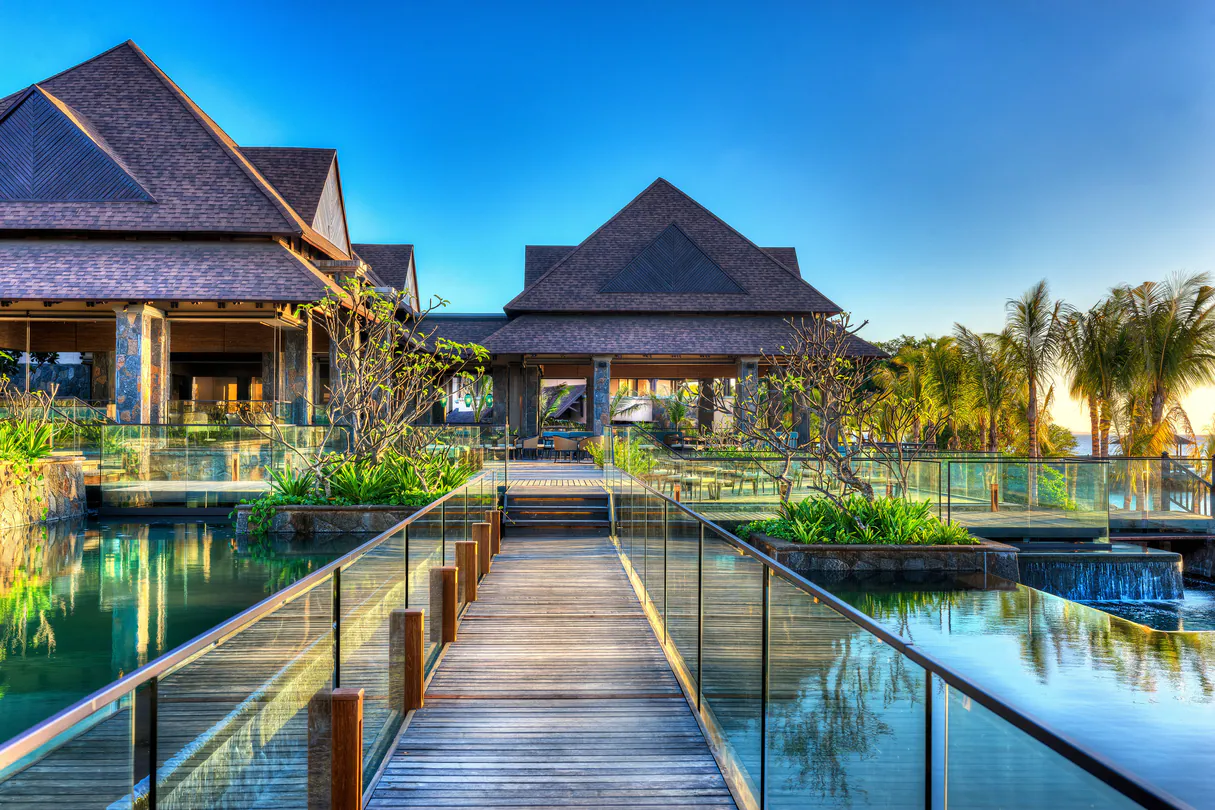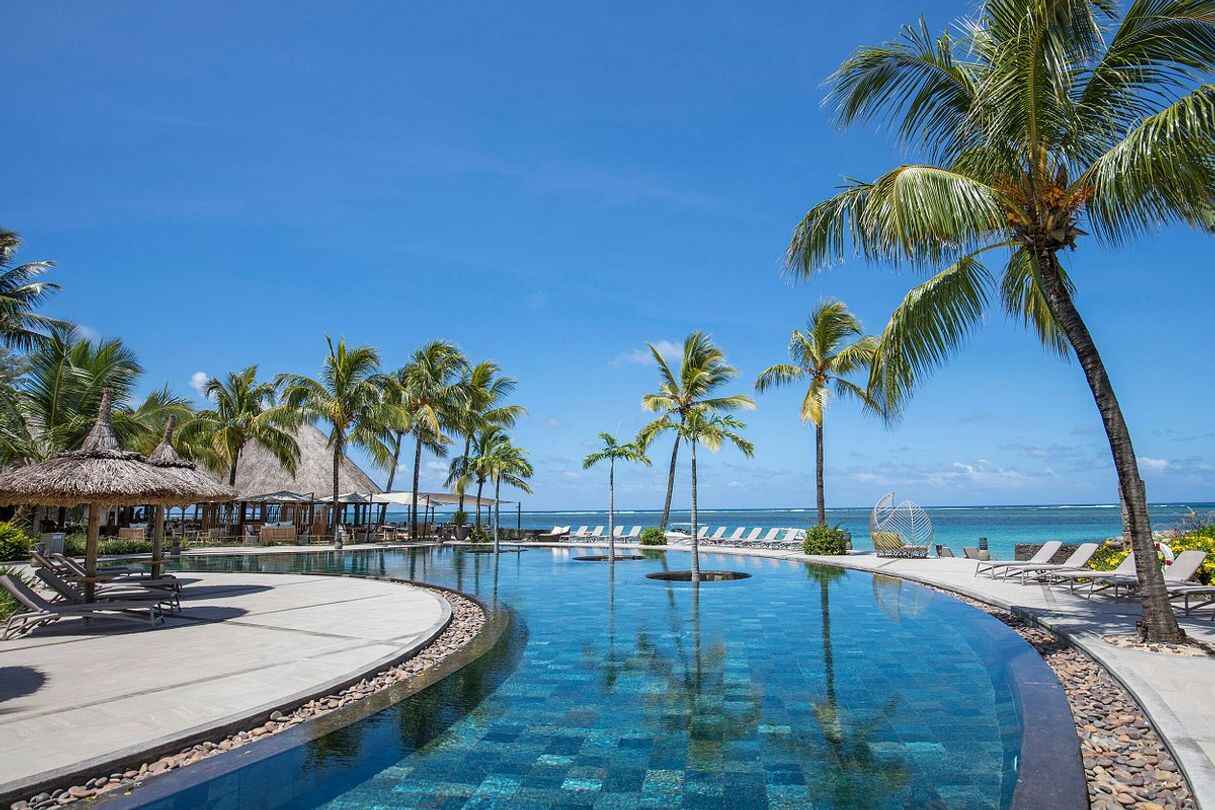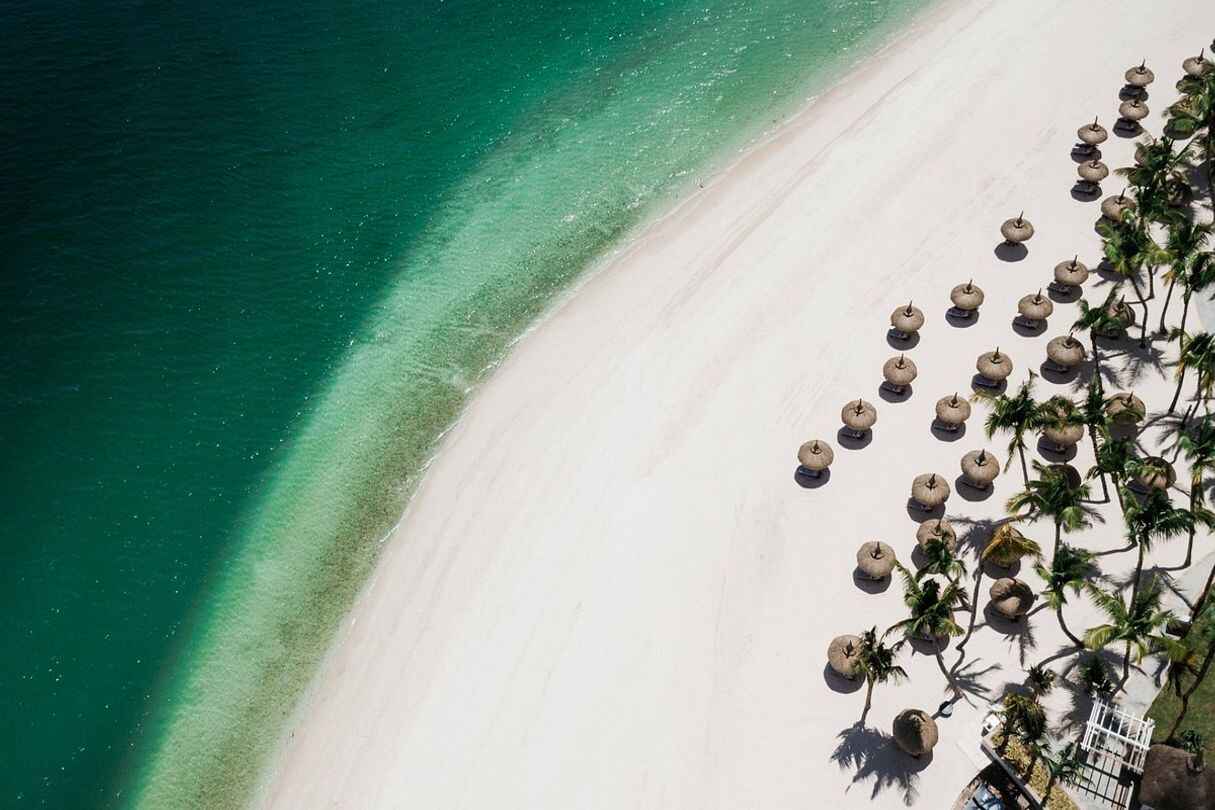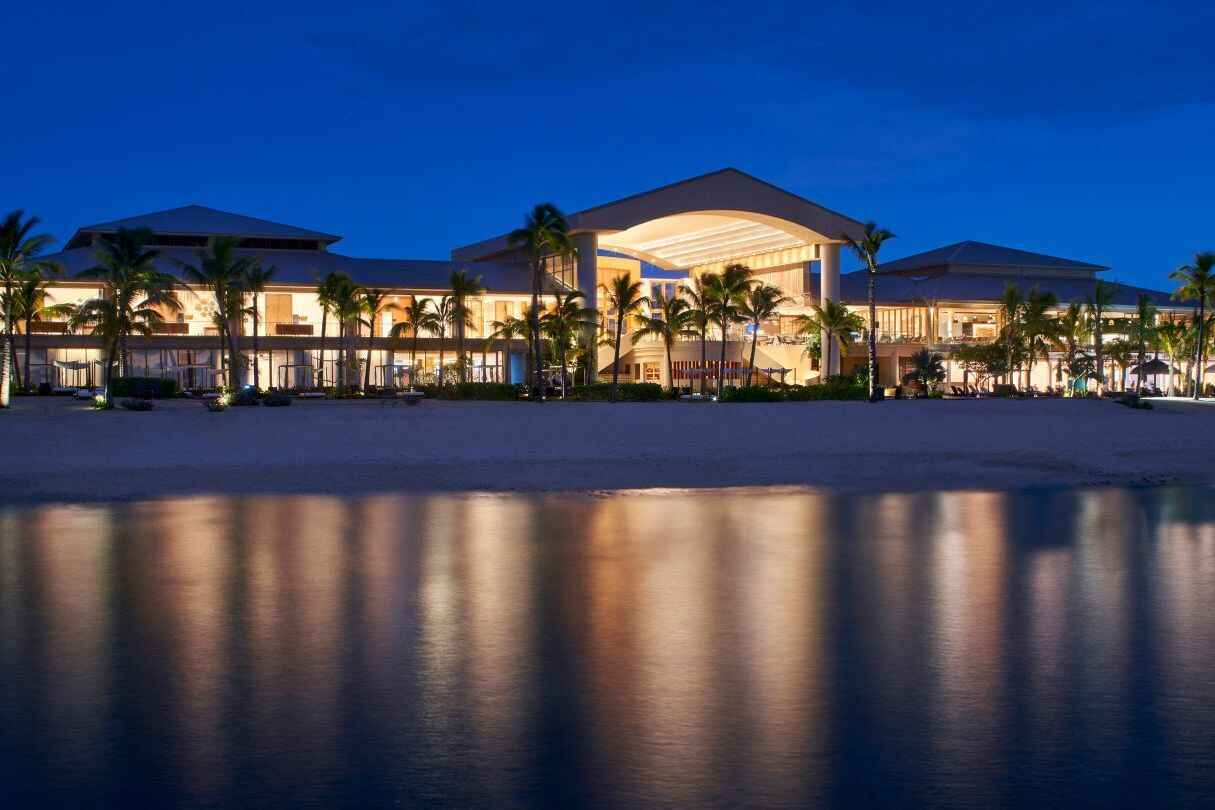Of course, most travellers in Mauritius have been lured by the beautiful stretches of coastline, the warm ocean, plentiful sunshine, numerous watersports, and high-quality resorts. However, things to see and do in Mauritius extend far beyond its white sand beaches and clear turquoise waters.See a replica of the legendary Dodo at Port Louis' Natural History Museum, and explore the Central Market, a bustling hub of culture, colour and bargains. Visitors also enjoy the impressive and historic manor houses in Moka and take in Chamarel's rainbow of coloured sands, the 'Seven Coloured Earth'.
Black River Gorges National Park is great for picnics, hiking and scenic drives and is home to wonderful waterfalls and wildlife, while La Vanille Reserve des Mascareigne is home to thousands of crocodiles and giant tortoises. It is well worth taking excursions inland to learn about the island's interesting history and culture, and to see how local Mauritians live outside of the fancy beach resorts. Learning the local Sega dance is a delight for visitors, and it is particularly special to seek out night spots frequented by locals rather than just sticking to the resort entertainment. Its lovely weather makes Mauritius a perfect year-round holiday destination.
Port Louis Central Market
The diversity of the Mauritian population is never more obvious than during a visit to the lively, bustling and colourful Central Market in Port Louis, accessed from Farquhar Street, near the harbour. When you enter take note of the intricate ironwork on the gates, erected in 1844, and dedicated to Queen Victoria. Inside the market you will find a whirl of Muslim traders, swarthy Indian touts, Chinese and Creoles, all demanding attention as they offer their wares. You can buy almost anything in the market including fresh produce, clothes, crafts, art and souvenirs.
Textiles, carved wooden figurines, essential oils and spices are all good buys. It is advisable to visit the market early, before the heat of the day descends (it opens at 6am every day including Sundays), and be prepared to have your senses assailed with a variety of odours from the fruit, herbs, spices, potions, lotions and various other goods offered for sale. Visitors will be expected to haggle and should be firm but friendly; as many of the stalls sell the same merchandise it is always a good idea to compare prices before settling. Tourists are generally charged far more than locals and having a local friend along is a big asset.
Blue Penny Museum
The lively Caudan Waterfront in Port Louis features the Blue Penny Museum, which is primarily devoted to Mauritian art and history, but whose place of pride is given to two of the rarest stamps in the world: the Mauritian 1847 'Post Office' Penny Red and Twopence Blue, estimated to be worth more than US$1 million apiece. Mauritius was the fifth country in the world to begin issuing postage stamps, back in 1847, and some of the few remaining early island stamps are now highly valued around the world.
The museum is run by the Mauritius Commercial Bank, which formed a consortium of local companies to purchase the stamps at an auction in Switzerland in 1993, and bring them home for posterity. The originals are housed in the museum but are not always on display; for preservation purposes the Blue Penny Museum also displays replicas. There is a gift shop at the museum which sells all sorts of souvenirs - the shop has some wonderful merchandise but it is relatively expensive. Tours of the museum are available and take between 30 and 90 minutes. It is a small museum and is not interactive or particularly exciting but it is well-organised and has some fascinating exhibits for visitors interested in artefacts of this sort
Royal Botanical Gardens of Pamplemousses
About seven miles (11km) northeast of Port Louis, and easily reached by regular buses, lies one of the island's premier tourist attractions, the Pamplemousses Gardens (now officially called the Sir Seewoosagur Ramgoolam Botanical Gardens, in honour of the late Prime Minister, but still colloquially referred to by their original name). The gardens are enclosed by beautiful wrought iron railings which are today in disrepair but when first manufactured in 1862 won a prize at an international exhibition at Crystal Palace in London. The gardens were first laid out in 1735 around a mansion house called Mon Plaisir as a vegetable garden to supply ships calling at Port Louis
Later the house was bought by horticulturalist Pierre Poivre, who introduced plant species from around the world interspersed with indigenous species.The garden is redolent with the perfume of fruit and spice trees, and the 24 hectares (60 acres) also sport a collection of stately palms, ebony, mahogany, latania and pandanus. A great attraction is a pond full of the Giant Amazon water lily. There are some animals in the gardens, including giant tortoises. There are usually guides available to give informative tours of the gardens for those who are interested, but it is also just a charming place to stroll or picnic, particularly on hot days when the shade and greenery is refreshing.
Beaches in Mauritius
The beaches of Mauritius are close to perfect, with fine white sand and clear water running to heavenly shades of blue. Some of the island's best beaches, on the west coast, are easily reached from Port Louis. Flic en Flac is the longest beach in Mauritius and features a beautiful lagoon. Grand Baie, 12 miles (20km) to the north of the capital, is a major tourist centre, offering watersports, shops, nightlife and restaurants to complement its splendid beach and deep sheltered bay. Also on the north coast road is Pereybere, one of the island's favoured swimming spots. Close to Pereybere visitors can find the gorgeous little beach, La Cuvette, which is a weekend favourite with locals.
The Baie du Tamarin is at the mouth of the Tamarin River, in a beautiful setting, and is popular for surfing, with Indian Ocean rollers washing the beach all year round. In the southwest is Le Morne Brabant, characterised by a basaltic outcrop and beaches shaded by casuarinas and coconut trees. Snorkellers enjoy Trouaux-Biches which has shallow waters and coral reefs. The peaceful east coast of the island offers Constance Belle Mare Plage, a long stretch of beach which is the ideal spot to watch sunrises and sunsets. Another east coast favourite is Roche Noires, named for the dramatic lack volcanic rocks that line the water. The east coast is great for sailing.
Domaine Les Pailles
A short taxi ride to the south of Port Louis is the Domaine Les Pailles cultural centre and nature park, covering more than 1,500 hectares (3,707 acres) in the foothills of the Moka Mountains and offering plenty of entertainment for visitors. The centre was once a sugar cane estate and some of the 18th-century features can still be seen. Activities include horse-drawn carriage and train rides, viewing a working replica of an ox-powered sugar mill, a rum distillery museum, exploring a herb garden and natural spring, and adventure safaris into the mountains in 4x4 vehicles.
There is also an onsite horse riding centre, several restaurants, a jazz club and a casino. The centre is a wonderful excursion for families travelling in Mauritius with children; the perfect place to enjoy a long, drawn-out meal while the children scamper all over the lovely grounds. Visitors should note, however, that Domaine Les Pailles doesn't always offer all the tours and activities listed above, especially outside of the peak tourist season. It is best to phone ahead to find out what's on offer at any given time, and to see which of the four restaurants are open, to avoid disappointment. The drive from Port Louis to the estate takes only ten minutes.
Casela Park
Home to nearly 150 species of birds, including ostriches and flamingos, Casela Park is a paradise for birdwatching in Mauritius. The park opened in 1979, and is home to many other kinds of animals as well, including zebras, giant tortoises, lions, monkeys, cheetahs, tigers and various antelope. There are several different ways to explore the 14-hectare grounds of Casela, and visitors will enjoy exciting modes of transportation like ziplines, segways, quad bikes, and hanging bridges. The park is very family-friendly and there are programmes for kids and teenagers, as well as a petting farm and restaurant.
Kids will love being able to hand feed animals and pet them and the whole family can enjoy game safaris. The park is perhaps most celebrated for its big cats and going walking with lions or petting a cheetah is indeed a once in a lifetime experience; sometimes there are even cubs to meet and cuddle. Some of the animals are kept in cages, but those visitors who disapprove of animals kept in captivity can avoid this section and still enjoy safaris to see the animals that roam the territory. The park should appeal to people of all ages and it can easily keep visitors occupied for a full day of fun.
Ile Aux Cerfs
The small island of Ile aux Cerfs (Stag Island), off the east coast of Mauritius, is one of the country's most popular tourist destinations, managed by the adjacent Touessrok Hotel, but open to the public. The island, featuring splendid tropical vegetation and encircled by magnificent sandy beaches, can be reached by boat from the small fishing village of Trou d'eau Douce. The boat trip only takes about 15 minutes. The island is equipped with a number of bars, restaurant and shops, as well as watersports facilities including parasailing, waterskiing, windsurfing and glass bottomed boat trips.
There is also a coral reef and lagoon which are perfect for snorkelling. The most recent, and somewhat controversial, development on the island is an 18-hole Bernhard Langer designed championship golf course, which affords a sea view from each hole and promises the novelty of hitting a tee-shot over a natural sea inlet onto the fairway. Although there are many activities on offer, it is also possible to just wander along the idyllic beaches and enjoy sunbathing, swimming and picnicking. The beach near the landing jetty is usually quite crowded but a short stroll will reveal more secluded slices of paradise.
Black River Gorges National Park
Situated in the southwest of the island, the Black River Gorges National Park is a popular spot for picnics, hiking and scenic drives. The park encompasses thick pine forests, gorges and rugged mountains and is a sanctuary for local flora and fauna. In fact, the park protects much of the island's remaining rainforest and some of Mauritius's endemic species, including the Mauritian flying fox. Bird-watchers will love the park and should look out for the Mauritius kestrel, the green echo parakeet and the Mauritius cuckoo shrike. The park's Chamarel Waterfalls are the highest in Mauritius at 83m (270ft) and are best seen after heavy rains.
The best viewpoints are at the Alexandria Falls or the Black River Gorges viewpoint. Cars cannot enter much of the park, which has been designed primarily for walkers, with 37 miles (60km) of hiking trails. Cars can be safely left in the car park. Trails vary in length and difficulty and there are two visitor centres where tourists can get maps and advice. There are usually souvenir and snack stands at the popular viewing points, but the best way to enjoy the park is to come prepared with a packed picnic and enjoy one of the lovely picnic spots.
La Vanille Reserve des Mascareigne
La Vanille Reserve des Mascareigne is a nature reserve in the unspoilt south of Mauritius, best known for its thousands of crocodiles and giant tortoises, which they are helping reintroduce to the island of Rodrigues. Reptiles in the park include Nile crocodiles, iguanas, caimans, geckos, chameleons and tortoises, and there are also monkeys, bats, mongooses, wild boars and some domestic farm animals for children to meet.
The park boasts a huge population of butterflies and an insectarium as well. Many of the animals are kept in enclosures and cages, making it more of a zoo than a nature reserve, but the animals seem well cared for and the breeding programmes are for conservation purposes. The enormous tortoises, which roam freely, are a highlight, and kids can ride and feed them. The vegetation in the park is lush and there is some interesting flora to investigate, and plenty of shade. Guides are available to show visitors around and give information on the various animals. There is a children's playground area, a shop selling souvenirs (including crocodile skin products) and a restaurant which serves crocodile steak, among other things. La Vanille Reserve des Mascareigne is a wonderful attraction for families visiting Mauritius.
Souillac
The small seaside resort of Souillac is situated along the rugged coast in the southern Savanne district. The appeal of Souillac lies in its scenery, as it is not a bathing spot. In striking contrast to the soft curves of the northern coastline, the high cliffs here drop abruptly to the sea to face the bracing winds of the Indian Ocean, which seem to blows all year round. The dramatic Gris-Gris cliffs are constantly smashed by waves (they are called the weeping cliffs - Roche qui Pleure - as a result) and tourists flock to the area to enjoy the rugged coastline. Souillac developed around, and was named after, the port built by the French, which gave the area strategic importance.
Later, the English also relied heavily upon the port for the transport of trade goods, but after the introduction of railways to the island, in about 1877, the port gradually went into decline. Places of interest in Souillac for tourists include the Telfair Garden, which is wonderful for picnics, the old port area, the Gris-Gris cliffs and the beautiful Rochester Falls. There are some great restaurants in the town and good accommodation for visitors. Souillac is special because it allows visitors to experience a different, wilder side of Mauritius.
Seven Coloured Earth
Promoted as Mauritius' first attraction back in the 1960s and located on the Mauritian island of Chamarel, the Seven Coloured Earth is a magical sight and still quite a mysterious phenomenon. The Seven Coloured Earth is a geological formation of sand dunes comprised of seven distinct colours which give the rolling dunes a fantastical, psychedelic look. The colours are usually defined as red, brown, violet, green, blue, purple and yellow. These warm colours are all the more striking in contrast to the bright green of the surrounding forest. The dunes are also interesting in that they never seem to erode, despite the tropical storms which lash the region.
The sands have formed from the decomposition of volcanic rock and the colours can be traced back to certain mineral deposits and varying stages of decomposition, but the phenomenon that keeps the vivid colours so resolutely separate is still not completely understood. Visitors can no longer climb on the dunes, which are now protected by a wooden fence and ringed by a wooden boardwalk. The estate which houses the sands is full of lovely lush vegetation and there are some dramatic waterfalls to check out nearby. You can buy test tubes of the colourful sand at a number of gift shops and stalls in the area. Visitors should note that the weather and time of day plays a role in how dramatic the colours look - they often look best at sunrise.
Rodrigues Island
Sometimes called the 'Cinderella of the Mascarenes', Rodrigues is a tiny island roughly 348 miles (560km) east of Mauritius, and a popular excursion from there. The island is volcanic in origin and is surrounded by stunning coral reef; there are some even smaller, uninhabited islands off the coast. The reef that fringes Rodrigues forms a calm lagoon, which shelters the inlets and beaches of the island and creates wonderful conditions for swimming and snorkelling. There are some glorious little beaches to lounge on. Less touristy than the resort towns of Mauritius, Rodrigues Island offers visitors a glimpse of a simpler and more authentic way of life.
The island itself is scenic, with unspoiled flora and fauna offering good opportunities for bird-watching, hiking, fishing, and exploring the wonderful caves. It is the only island in the archipelago that has extensive limestone deposits and caves. Rodrigues has a unique environment and a number of endemic species, including the critically endangered Rodrigues flying fox. Although it was once a district of Mauritius, Rodrigues became an autonomous region of Mauritius in 2002. The best way to get to Rodrigues Island is by plane rom Port Louis to Plaine Corail Airport.
Ganga Talao
Located in a secluded mountain area in the district of Savanne, and bordering a national park, Ganga Talao (or Grand Bassin) is a crater lake considered to be the most sacred Hindu site in Mauritius. According to legend, Lord Shiva and his wife Parvati were travelling over Mauritius carrying the Ganges River, and a few drops spilled and formed Ganga Talao. On the shores of the lake is a temple dedicated to Shiva, and a number of other shrines, and every year many Hindus from around Mauritius make a pilgrimage to the site, often walking barefoot from wherever they live.
One of the main sights at Ganga Talao is the 108-foot (33m) statue of Lord Shiva in the middle of the lake which is the tallest statue on the island, and an exact replica of the Shiva statue of Sursagar lake in Vadodara, Gujarat, India. The lake, deep in the heart of Mauritius, is a popular attraction and has become quite commercial, with plenty of stalls selling souvenirs and snacks. It is nestled in a picturesque mountainous area and is well worth a stop if you are in the region. There are some monkeys living around the lake and temple which can be very entertaining but are liable to steal anything you leave lying around.
Climate
Mauritius has only two seasons, with minimal differences between them, making it a perfect year round destination. Summer runs from November to April, with temperatures reaching as high as 93ºF (34ºC) on the coast. Humidity is highest from December to April but is never unbearable, particularly on the coast where there is an almost constant sea breeze. The northeast (around Grand Baie) is more protected from the southeast trade winds. Cyclones, with strong winds and heavy rain, can occur between January and March. Mauritius will normally experience about three or four cyclones a year during this period, each usually lasting a couple of days, and flooding can result. During winter the temperature drops a few degrees; however, there is still plenty of sunshine and it is a very pleasant time of year to visit. Sea temperatures vary between 75ºF (24ºC) in the winter and 82ºF (28ºC) in the summer. The peak holiday season runs from October to April, with hotel prices dropping over the winter months. If you plan to visit during peak season be sure to book accommodation far in advance to avoid disappointment. To avoid the rainy season, visit anytime between April and December.











